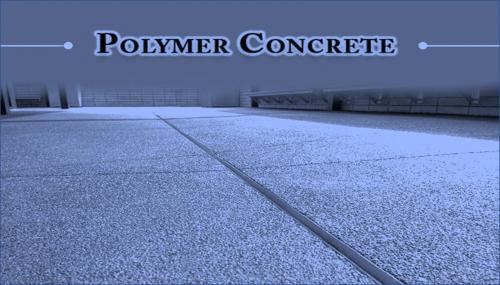Why are Construction Firms Turning to Polymer Concrete?

As of 2017, 189 strategic infrastructure projects in Germany were in the development phase with a total investment of $129.6 billion. Similarly, in 2014, under the ‘Make in India’ initiative, an investment of $650.0 billion was estimated for urban infrastructure development in the country for the next 20 years. Governments of the world are increasing their investments in civil construction projects, such as buildings, water reservoirs, bridges, tunnels, roads, sewer systems, railways, and airports, as the construction industry helps in creating jobs and channelizing investments. Due to the growth that the construction industry is experiencing, the use of polymer concrete is also increasing.
Polymer concrete is a composite material which hardens into place using an epoxy binder. Various kinds of polymer resins, such as polyester, vinyl ester, and epoxy, can be used to make the materials as they allow the concrete to be poured or troweled and then hardened. Polymer concrete has many advantages over traditional concrete, including high resistance to chemical attack, abrasion, freezing, thawing, and impact and high compressive strength. Due to these reasons, the polymer concrete market is expected to grow at a CAGR of 7.1% and reach a value of $2,964.0 million in the coming years. The increasing repair and maintenance activities are one of the primary reasons behind the growing demand for the substance.
In February 2018, the President of the U.S. rolled out a plan to repair and rebuild the nation’s infrastructure, including highways, seaports, bridges, airports, and railroads, with an investment of $2.0 trillion. Similarly, out of the 600,000 bridges in the U.S. almost 40.0% were more than 50 years old and 9.1% were structurally deficient in 2016. Due to these reasons, North America accounted for more than 20.0% of the worldwide revenue for companies manufacturing the substance in 2017. The material ensures that the repairing process doesn’t take much time. For example, rapid patch polymer concrete makes sure that emergency repairs of airport runways are done quickly so that not much disruption is caused to airport operations. In addition, polymer manufacturers in the region are also trying to enhance the properties of their products, such as chemical resistance, ease of installation, and toughness, which is resulting in a surging demand for polyester concrete for infrastructure and construction industries.
The various types of polymer concrete available are polyester, vinyl ester, and epoxy. Polyester resin is used as a binding agent instead of cement in polyester concrete, which provides flexural strength to the concrete. Vinyl ester polymer concrete is used for the chemical-resistant construction of containment areas, dikes, and sumps. In addition to having superior chemical resistance, this type of polymer concrete has low porosity, fast chemical set and less down time, and a maximum service temperature of 220-degree F. Up till now, the polymer concrete market for epoxy-based products has been the largest in terms of consumption because of their high physical strength and good bonding ability with metal surfaces and concrete. Applications which encounter high impact, chemical exposure, and heavy loads use this polymer concrete as it has superior mechanical and durable properties.
Post Your Ad Here
Comments